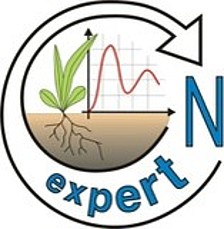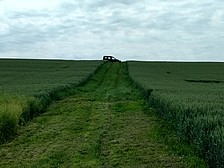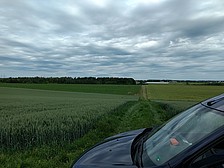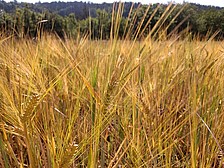Assessment of soil functions and valuation of lost soil-related ecosystem services due to land consumption and soil sealing under a changing climate
Daniela Bendel
Was defending her PhD thesis in July, 2023.
University of Hoheneheim, Stuttgart
Institute of Soil Science and Land Evaluation
Supervisor: Prof. Dr. Thilo Streck, Prof. Dr. Enno Bahrs and Prof. Dr. Tobias Weber
Challenges
Soils provide an indispensable livelihood for plants, animals and humans and are vital to most of the 17 UN Sustainable Development Goals. In accordance with the concept of ecosystem services (ES), people obtain benefits from the soil that bear on its various functions:
Provisioning services provide goods to humans, regulating services control water (run-off and flood), energy and matter flows, cultural services offer esthetic, educational and recreational values and supporting services contribute indirectly to human wellbeing.
These services are endangered as soils are exposed to many impacts that strongly affect their quality, one of the major threats of which is land consumption due to soil sealing.In Germany, 50,000 square kilometres are used as a settlement and traffic area, half of which is sealed. Although the rate of land consumption has recently diminished, it still amounts to 62 hectares per day. The German Federal Government wants to reduce this rate to 30 hectares by 2020. Although the adopted measures have shown some effect, this target is expected to be missed. To highlight the severe impacts of soil sealing, this project seeks to quantify the cost of lost ES caused by soil sealing of agricultural land and thus limited soil functions. These costs are not considered in decision making and environmental planning due to the complexity of different soil types and land use specific ES. This task can probably be solved by integrating numerical modeling in order to gain a profound process-understanding.
Objectives
Research objectives of this project are
1) the identification of soil-related ecosystem services and their associated per unit economic value,
2) the quantification of soil-type specific economic costs of land consumption and soil sealing of agricultural land,
3) the quantification of past and future costs associated to land consumption at catchment scale,
4) the assessment of potential aggravation due to climate change and
5) the provision of a basis for land-use planning to account for ES costs.
Expected results
The expected results of this project will be manifold and beneficial for different target groups.
First, a complete and novel database, which assigns monetized values to the provisioning and regulating ES will be established. Cultural and supporting ES will also be included.Secondly, ES benefits will be quantified for different soil types for the first time in Baden-Württemberg, resulting in a substantial increase in accuracy, and will be displayed within a GIS-map.The development of a catalog which is easy to handle for environmental planners and which allows for the assessment of economic costs of ES losses dependent on soil type will be another outcome.
The main result will be information on ES losses and economic costs for different agricultural land management and climate scenarios, emphasizing the great importance of intact soils to humanity and serving as a strong reminder to explicitly account for soils in decision-making in environmental policies.
Aims
The aim of this project is to gain knowledge about the value of land in relation to different uses (and users) and underlying soil types. This knowledge will help to make better-informed and balanced decisions on land use changes, leading to minimized negative impacts on ecosystem services and consequently on natural and societal benefits.
Methods
By use of the coupled soil-vegetation-atmosphere model Expert-N, soil functions will be quantified in order to estimate water-related ES. Soil function indicators will be coupled with detailed process understanding, an approach that is strongly suggested in literature. In this project this approach is taken a step further by accounting for soil-type-related crop and biomass production to simulate the water, energy and matter flows in agroecosystems. With this, ES such as crop yields, the amount of fixed carbon dioxides, and water quality and quantity are quantifiable.The proposed research project will benefit from a modeling framework for the Ammer catchment in Baden-Württemberg set up by the Collaborative Research Center SFB 1253 Catchments as Reactors. It will serve as a basis to a) parameterize Expert-N, and b) enable the assessment of the effects of past and future land consumption (soil sealing) and future climate change. This directly links impacts of soil sealing to the effect on the water and nutrient cycle in all compartments at catchment scale. Different spatially explicit management scenarios, developed in this project, and climate scenarios will be considered in simulations to assess future ES losses. Scenarios will consider the current trend of soil sealing and integrate the 2030-target for the reduction of land consumption of the German Federal Government.
Peer reviewed publications:
1. Sponagel, C., Bendel, D., Angenendt, E., Weber,T., Gayler,S., Streck,T., Bahrs, E.,2022. Integrated assessment of regional approaches for biodiversity offsetting in urban-rural areas – A future based case study from Germany using arable land as an example, Land Use Policy, 177









